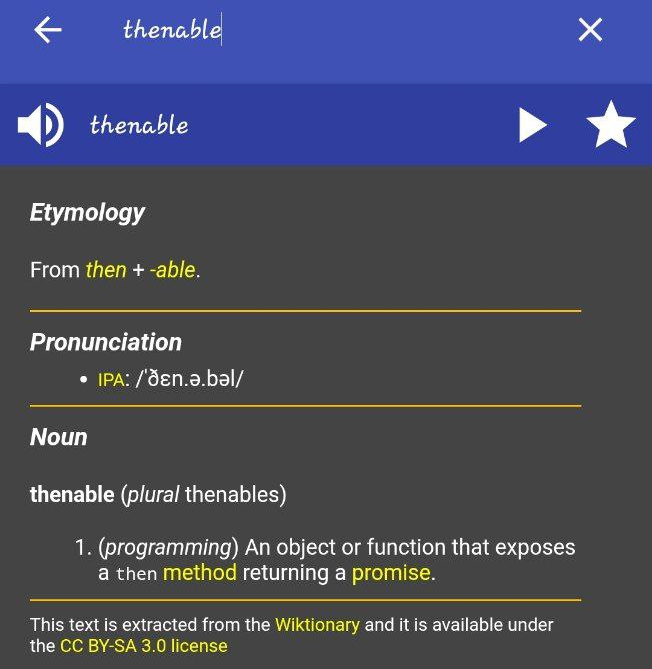Don’t tell me you don’t know await is rogue too, jess christ.
Tell me what is going here.
(async () => {
const x = await { then: (f) => f(4 + 2) };
console.log(x);
// 6
})();
Example by Thomas
Right there is a thenable, a big time Javascript interface implemented in .then callback chaining.

Or as MKRhere like to put it
“An object that exposes a then method is a Thenable”
Now let’s explore some more interesting things.
Let’s quickly reiterate on a fundamental definition.
A Thenable is simply an object with a .then() method. That’s it. No fancy constructors, no new Promise(), no specific internal slots. Just a method named then.
Think about it, the Promise specification itself relies heavily on the then method. It’s the core of how asynchronous operations are chained and resolved. And await, bless its rogue little heart, just says, “Hey, if you’ve got a then method that behaves like a then method, I’m good. I’ll wait for whatever value you pass to that function.” that’s incredibly pragmatic in my opinion.
Now, if we internalize this, what else becomes possible? What if we don’t even need a Promise at all to await something? Thomas’s example with f => f(4 + 2) is simple enough. But what if the “value” isn’t immediately available? What if it’s… delayed?
Imagine we’ve got a function that simulates fetching a user’s profile, but instead of returning a Promise, it returns a plain object that just looks like a promise.
Scenario 1: The ‘Fake Promise’ that’s totally legit to await
const fetchUserProfileThenable = (userId) => {
console.log(`Fetching user ${userId}...`);
return {
then: (resolve) => {
// Simulate network delay
setTimeout(() => {
const user = {
id: userId,
name: `User ${userId}'s Profile`,
status: "active",
};
console.log(`User ${userId} fetched!`);
resolve(user); // Resolve with the user object
}, 1000); // 1 second delay
},
};
};
(async () => {
console.log("Application starting.");
const user1 = await fetchUserProfileThenable(1);
console.log("Awaited user 1:", user1);
const user2 = await fetchUserProfileThenable(2);
console.log("Awaited user 2:", user2);
console.log("Application finished.");
})();
Expected output:
Application starting. Fetching user 1… User 1 fetched! Awaited user 1: { id: 1, name: “User 1’s Profile”, status: “active” } Fetching user 102… User 102 fetched! Awaited user 2: { id: 2, name: “User 2’s Profile”, status: “active” } Application finished.
Surely that looks fantastic right?, lesser overhead than using new Promise();
Here’s a real life use-case in from Prisma docs.
If you have, probably written code that looks suspiciously like this:
// Prepares the query but does not run any thing;
const allUsers = prisma.user.findMany();
// Actually run the query.
await allUsers;
// so you know how Prisma is designed to handle this right?
Well mostly we will just run…
const allUsers = await prisma.user.findMany();
But in their implementation, It’s a form of lazy execution provided by implementing the thenable interface.
When NOT to go rogue
-
Tho powerful, custom thenables can be harder to debug if their
thenmethod is too complex or deviates from expected promise-like behavior. Native Promises often provide more consistent guarantees. -
“The
Promise.resolve()Connection”: Explicitly showing howPromise.resolve(thenable)works, asawaituses a similar internal mechanism.
How new language features might standardize some of the patterns custom thenables can achieve, is something i’m i will be watching for.
If you have some interesting additions, let’s chat in the comments :)
